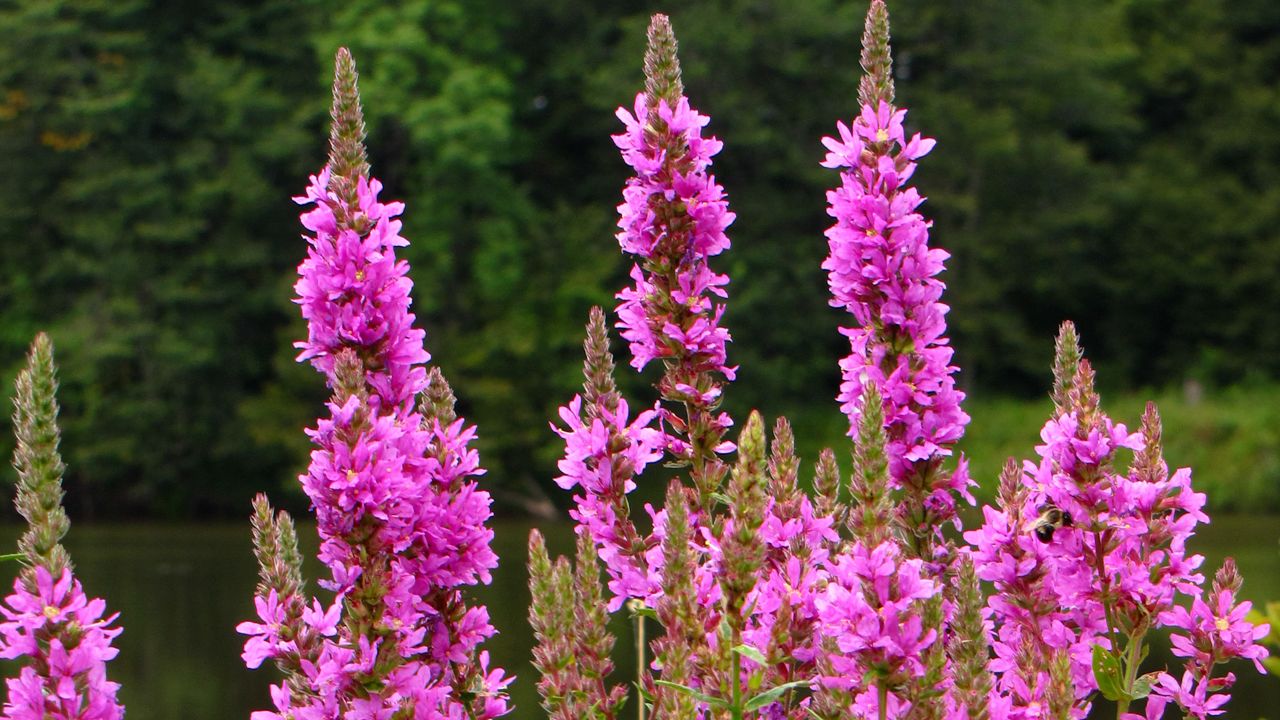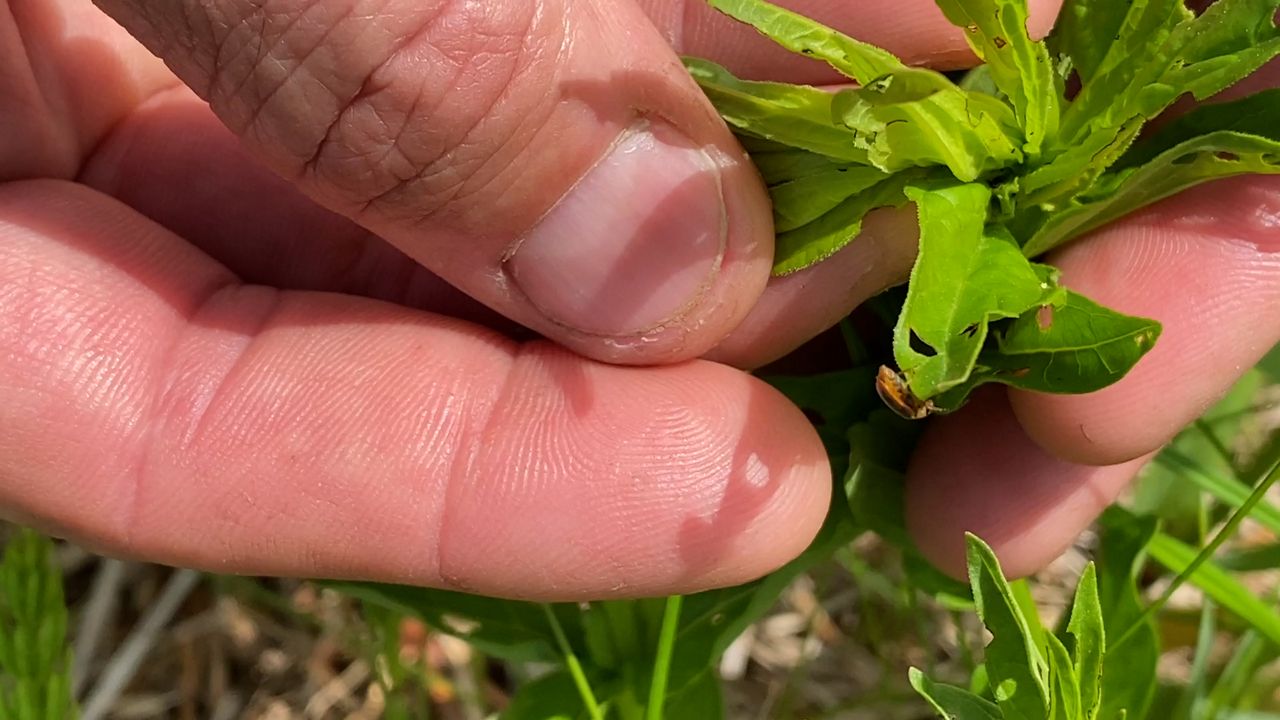BERLIN, Wis. — When an invasive plant started taking over areas of the state, researchers looked at a natural remedy to control its growth without using chemicals.
Aquatic invasive species expert Chris Hamerla of Golden Sands recently checked in on a Berlin property that started combatting an invasive plant last year by growing Galerucella beetles.
“Seeing beetles on every plant or seeing eggs or seeing chew marks, that’s great because we know that every plant is getting control,” said Hamerla.
The plant in question is a purple loosestrife, a non-native plant that can take over areas if left unchecked.

“Up until the early to mid 1980s, you could buy it in Wisconsin in nurseries because it was a pretty plant. Then we started to figure out how invasive it could be on our wetlands,” explained Hamerla.
The plant came over from Europe and grew without predation in the state. In the mid-1990s, research began on bringing over their natural predators, the beetles.
“They feed almost exclusively on purple loosestrife,” said Hamerla. “They don’t bite. They’re not going to invade your home over the winter and cause problems. They just really work well at controlling the purple loosestrife as a bio-control.”
Gayle Marks said she found the idea of controlling the spread on her Berlin property without chemicals to be appealing.
“It’s organic. I want to keep it that way. Chemicals have a place and a time, but it should be as short as a length of time and as minimal as possible,” said Marks.
Marks started growing her beetles last year with help from Hamerla and the Golden Sands Resource Conservation & Development Council.

“The research has shown that it prefers purple loosestrife. When the purple loosestrife population crashes, the beetles will either fly to another spot where there’s purple loosestrife or typically, those populations are going to die,” said Hamerla.
Plants left unchecked can grow to eight feet tall and choke out native vegetation. The beetles help turn the tables on the invaders.
“It’ll take five to ten years, the real impact on the purple loosestrife because they’re not killing the plant, they’re just stressing. You’re hoping to see smaller plants over time,” said Hamerla.
Digging up plants by the roots also works, but many grow in wet, hard-to-access areas.
“Just depends on how much work you’re able to or want to put into it when the beetles can do a lot for you,” said Hamerla.
The Galerucella beetles are working their way through the area, bringing balance back to the native plants without needing chemicals.



